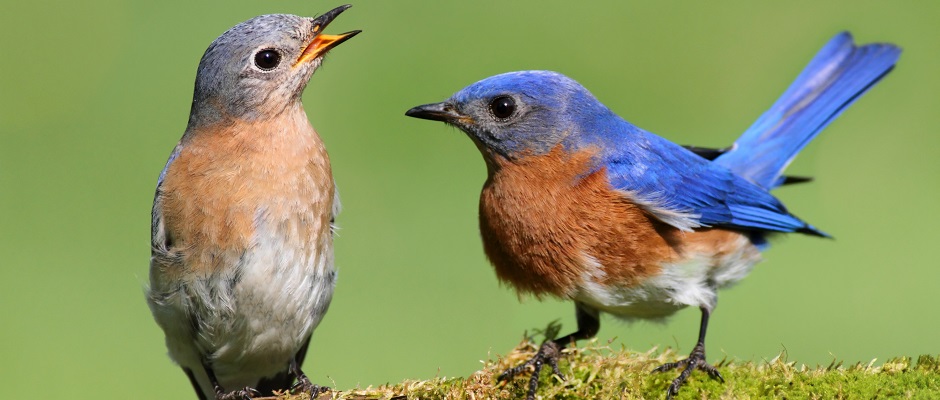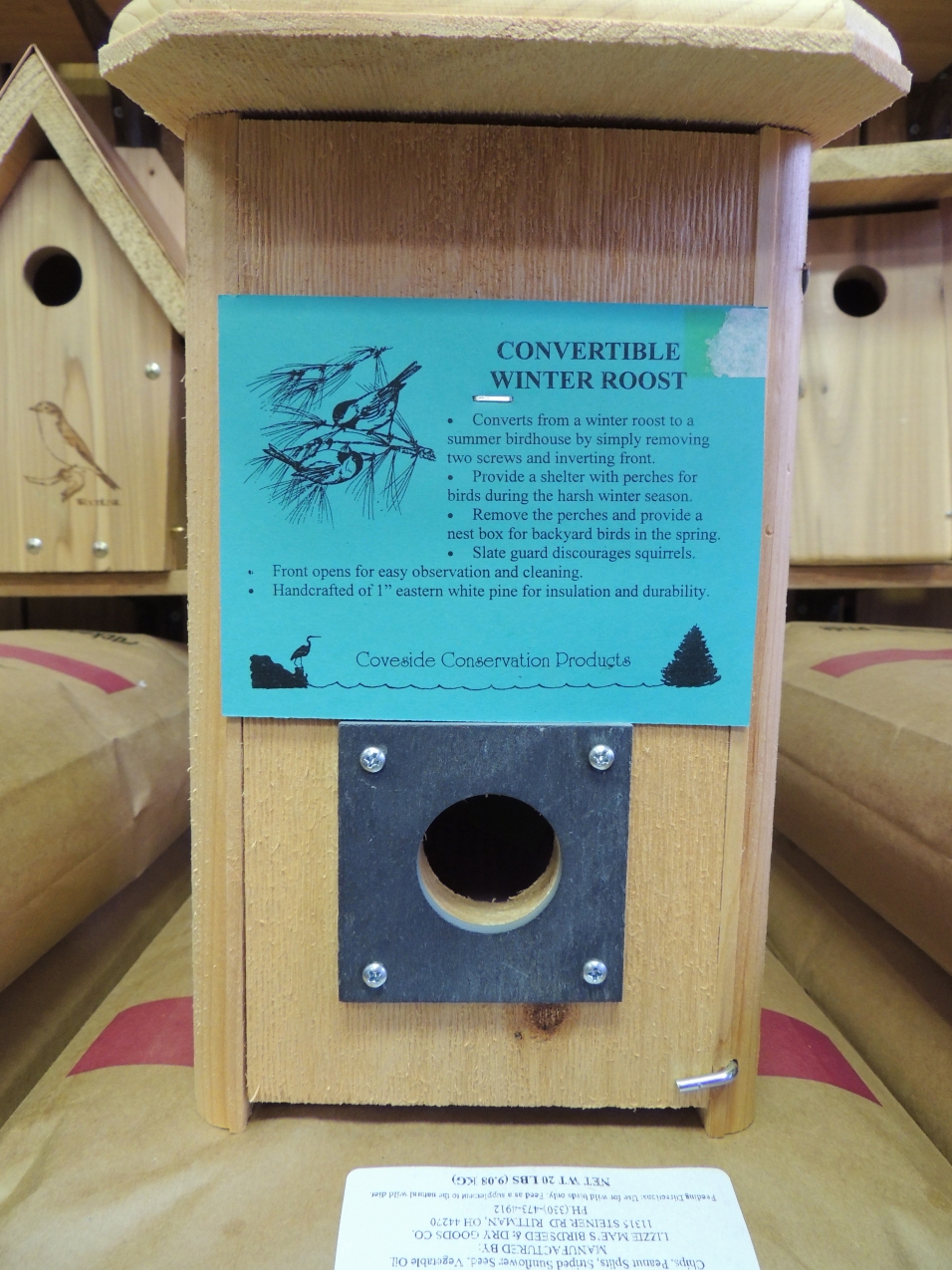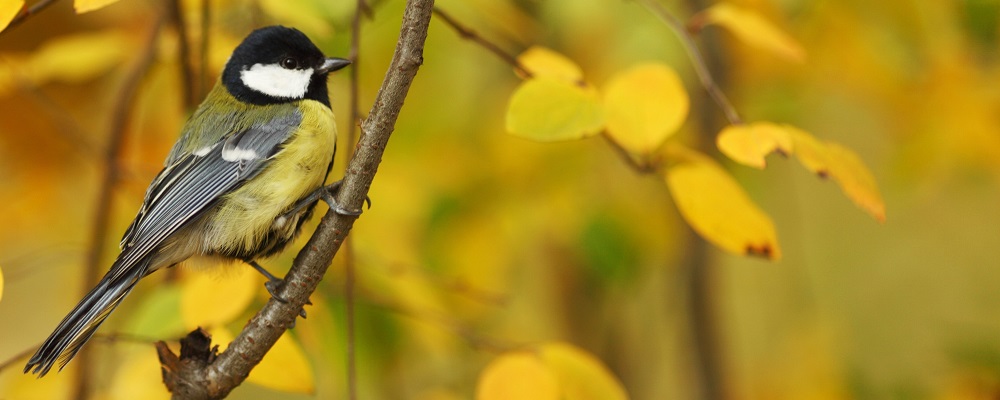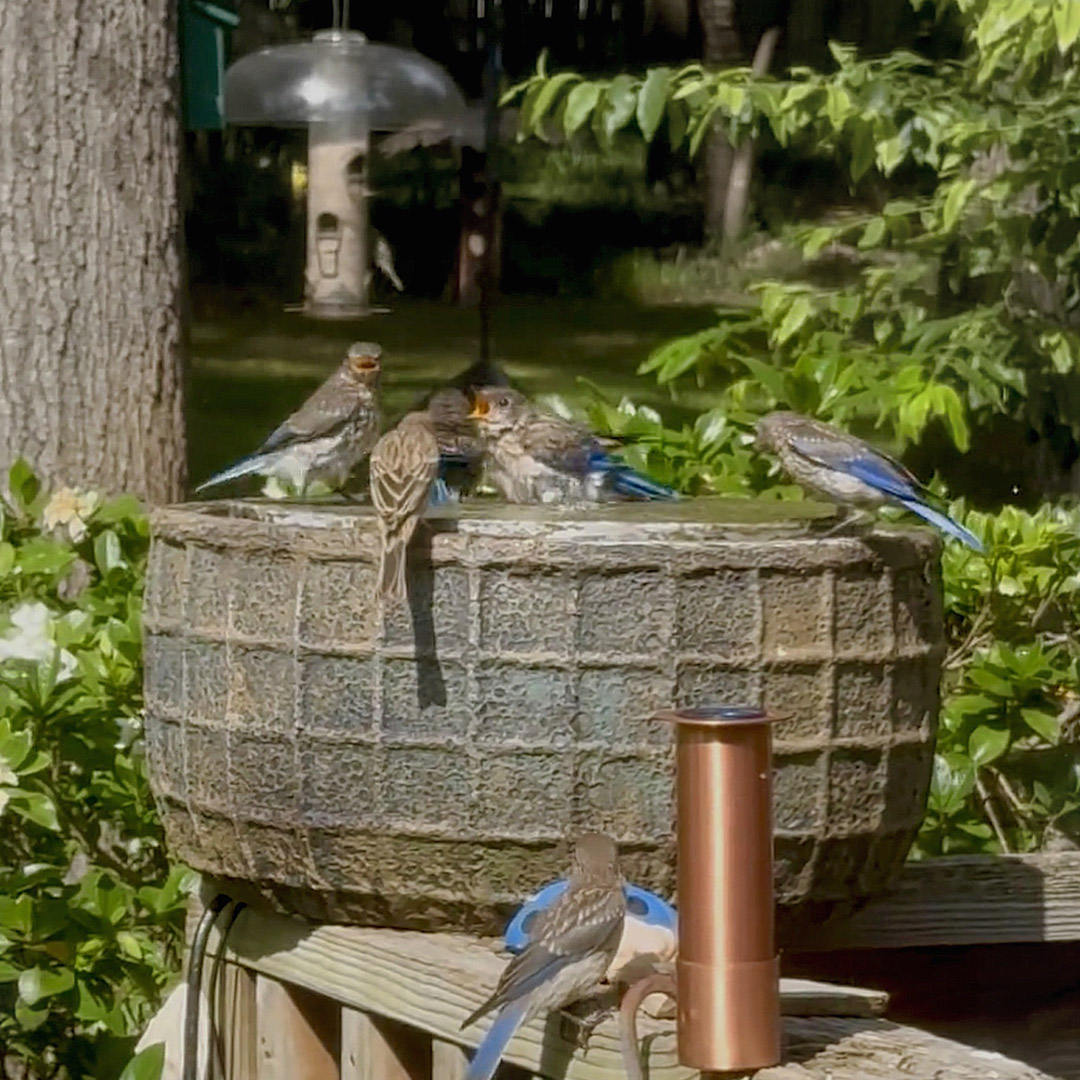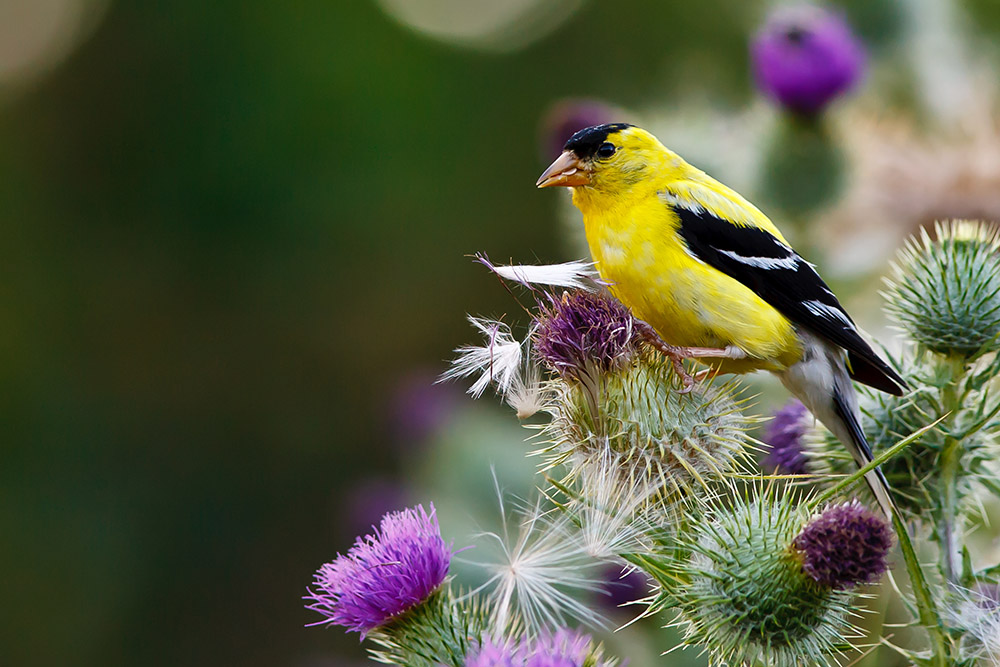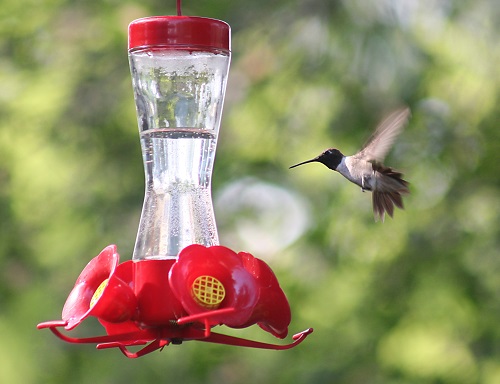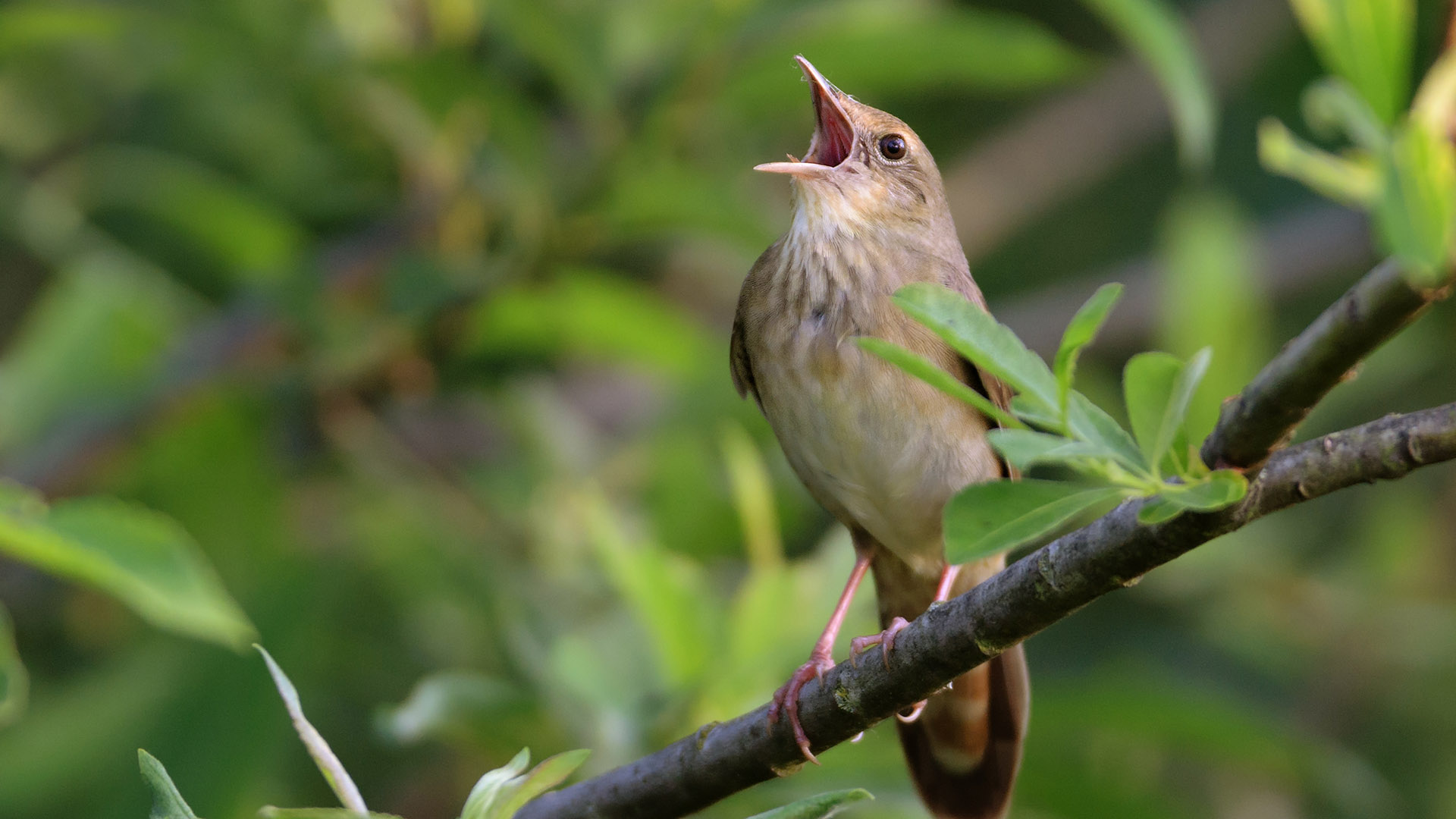Prior to the 1930’s, the Eastern Bluebird was one of North Carolina’s most common songbirds. By 1979, bluebirds were declared rare and uncommon by the U.S. Fish and Wildlife Service. Man’s activities and severe winters resulted in a 90% decline in bluebird populations. The continuing loss of natural nesting sites and other problems faced by bluebirds indicate that this beloved bird will always need man’s help to survive.
Installing and Monitoring a Nest Box
- Select good habitat. Open, rural country with low or sparse ground cover and scattered trees is best. Pastures, large lawns, golf courses, parks, and cemeteries are all good sites for nest box trails. Vandalism and excessive human disturbance may present problems in some public places. Poor habitat selection often results in more house sparrows rather than bluebirds.
- Avoid brushy and heavily wooded areas. These habitats are far more suitable for house wrens, which will probably dominate existing nest boxes.
- Avoid areas where house sparrows are abundant.. House sparrows will kill bluebirds and destroy eggs and young.
- Avoid areas of pesticide use.
- Face boxes toward open areas in any direction. Ideally, the entrance hole should face away from prevailing winds. A tree or suitable perch 40 to 100 feet from the box provides a perfect rest stop for young on their first flight.
- Keep boxes at least 100 yards apart. This allows the bluebirds to establish a territory around the nest box.
- Protect boxes against predators. Do not place Bluebird boxes on trees. Snakes, raccoons, housecats, and other predators can quickly reduce bluebird numbers. Repeated nest box raids often cause abandonment of the box. Visit Backyard Birds to see the types of baffles that work best to prevent bluebird losses.
- Monitor the boxes. Check them once a week during the nesting season to record progress of the nestlings and to control house sparrows. Establishing a nest box trail in a loop is most convenient for monitoring. You will end up near where you started monitoring and avoid disturbing the birds as you backtrack.
- Always remove house sparrow nests immediately when found. To encourage second or third broods, remove bluebird and other nests as soon as young birds fledge from the nest box.
- Inspect boxes in early fall and late winter; clean and repair if necessary. Bluebirds are less likely to nest in a box that has an old nest in it. Old nests increase the numbers of parasites in the box, often resulting in nest failure.
- Keep a bluebird journal. Record the date, species using the box, number of nestlings, number of young fledged, and any other interesting observations.
- Share your results. Be sure to share your results on our Facebook page . Relatives, friends, and neighbors are often delighted to hear about your results, too. You may interest someone else in bluebird conservation!
New boxes and trails should be established and older boxes cleaned and repaired prior to the start of the bluebird nesting season. Ideally, boxes should be available by early-March in North Carolina. However, since bluebirds have more than one brood a year, boxes may be put up at any time of the year. The success rate for box use drops as the nesting season progresses.
Set Up Feeding Stations
Establish several bird feeders around the yard. You probably want to use squirrel proof feeders that can be adjusted to close when a certain amount of weight is sensed. It’s a good idea to keep the area around your feeders free of weeds where cats and other lurking predators could hide.
Bluebirds and other wild song birds will be attracted to feeders containing cracked sunflower seeds, suet, peanut suet nuggets, and meal worms especially when they are feeding nestlings or when their normal diet of insects is hard to find. Be sure to remove discarded seed from the ground around the feeders that might mold and sicken the birds who eat it.
Make your own blend of wild bird seed using the following ingredients: [list type=check ]
- Sunflower seed combo (black oil & striped)
- Safflower seeds
- Cracked sunflower seeds
- Peanuts
- Nut n’ Berry mix
Suet is also good for feeding year round, but in the heat of summer, switch to the non-melt type of suet cakes.
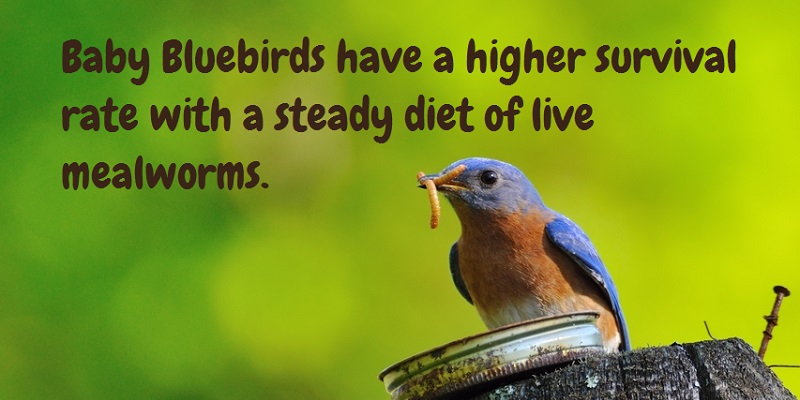
Provide Fresh Water
Provide shallow bird baths containing fresh water near the feeding stations. Change the water daily and keep the bird baths clean and free of mold. Avoid deep bird baths because very young birds are not quite ready to fend for themselves and may drown if their parents are not around to save them. Be sure to keep the area under bird baths clear of weeds that can hide lurking cats and other predators. Come in to Backyard Birds and check out our new selection of birdbaths.
What Else Can You Do to Help?
Learn to recognize the nest and eggs of the house sparrow and remove them from your nest box. House sparrow nests, eggs, adults, and young are not protected by law and may be legally removed or destroyed. It may take many weeks of removal to discourage house sparrows from using your bluebird box.
A house sparrow nest is very sloppy. It is made of coarse grass, rootlets, leaves, straw, and possibly bits of cloth and litter, which fill the cavity. It often has a domed roof when built in a nest box and may vary in size. The three to seven eggs are oval and white, gray or greenish, with irregular, brown speckles.
Join our Backyard Community
Backyard Birds e-newsletter is chock full of the latest Backyard Birds news, special offers, promotions, and in-store events happening right here as well as related events in our area. Join our Backyard Community and get connected today! It takes less than a minute of your time to fill out. Plus, as a way of saying thank you for subscribing, we’ll email you a $5 off coupon to use on your next $35 or more purchase.

